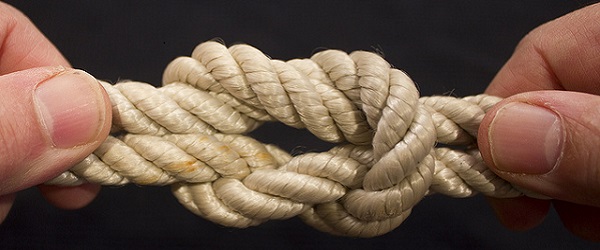Did you ever encounter resistance from a mammalian cell line when trying to extract the contents? Probably not, because destroying cell membranes is easy. Cell walls, however, are a different story. They are rigid, protective layers that can be so strong that the organism gives up movement in favor of protection!
Cell walls exist in all kingdoms except for the animals: plants, protists (algae), fungi, bacteria, and achaea. If you want to break down the cells to get to the good stuff inside, there are different methods depending on the type of cell wall and application. In this first part, I’m going to introduce you to five kinds of cell walls. In Part II, I will show you how to break down those defenses.
1. Plant cell walls
Main ingredients: Cellulose, pectin (primary), lignin (secondary)
Plant cell walls consist of a primary and (optional) secondary membrane. The plant cell wall interacts with the cell inside, which takes up water and presses against the unbending cell wall. This so-called turgor pressure is the key to the stability of the plant. However, primary cell walls are flexible, allowing the plant to grow and retain plasticity. They consist largely of the polysaccharides cellulose (derived from glucose), pectin and hemicellulose. Secondary membranes contain lignin, a very large and complex organic molecule. Lignin is basically the stuff that makes the wood of trees. It helps make cells of the water transport system (xylem) strong and waterproof.
Enjoying this article? Get hard-won lab wisdom like this delivered to your inbox 3x a week.
Join over 65,000 fellow researchers saving time, reducing stress, and seeing their experiments succeed. Unsubscribe anytime.
Next issue goes out tomorrow; don’t miss it.
2. Algal cell walls
Main ingredients: Cellulose and other Polysaccharides
Algal cell walls, similarly to plant primary cell walls, consist largely of polysaccharides. In addition to cellulose, they can contain mannan (derived from mannose) or xylan (derived from xylose). Their combination is a feature that helps the classification of algae. Some algae cell walls contain specials, for example the alginic acid of the brown algae, which can absorb water and form a tasteless gum that is used in the food and cosmetics industry. The beautiful diatoms strengthen their cell walls with silica made from hydrated silicic acid.
3. Bacterial cell walls
Main ingredient: Peptidoglycan
Bacterial cell walls are the key feature that distinguish gram positive and gram negative bacteria. You have probably done a gram staining at some point of your life, which stains the thick peptidoglycan-rich cell wall of gram positive bacteria (~90% peptidoglycan) purple and leaves gram negative bacteria (10% peptidoglycan) pink. Peptidoglycan is made from glycan polysaccharide chains connected by amino acids, forming a strong mesh around the cell. This molecule is only found in bacteria, which makes it an excellent target for immune system and therapeutics.
4. Archaeal cell walls
Main ingredient: Pseudo-peptidoglycan
Archaea are a very diverse and not yet fully investigated group, and so are their cell walls. Many contain pseudo-peptidoglycan (similar to the one in the bacterial wall) with additions that reflect their extreme habitats.
5. Fungal cell walls
Main ingredient: Chitin
The cell walls of true fungi are made up of chitin, a polysaccharide similar to cellulose but containing nitrogen (acetyl-amin) groups instead of hydroxyl-groups. Chitin can also be found in the shells of arthropods, where it is mixed with sclerotin to create a stable exoskeleton.
Now you know what you are dealing with, but don’t worry, all these walls are going to come down when you try the methods in you’ll find in Part II!







